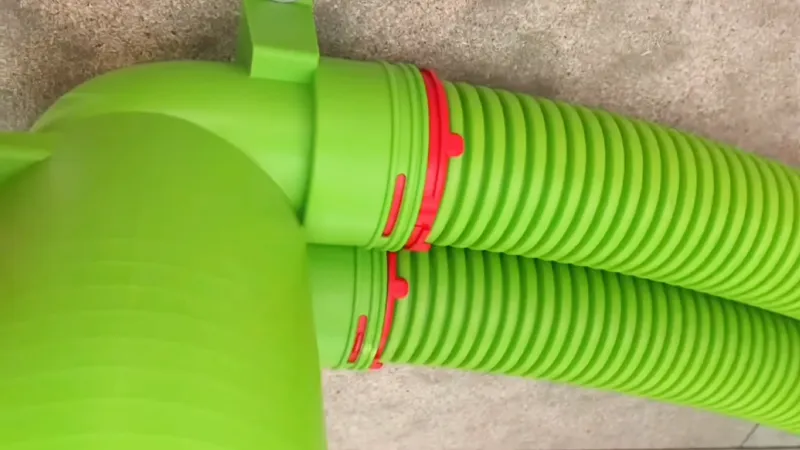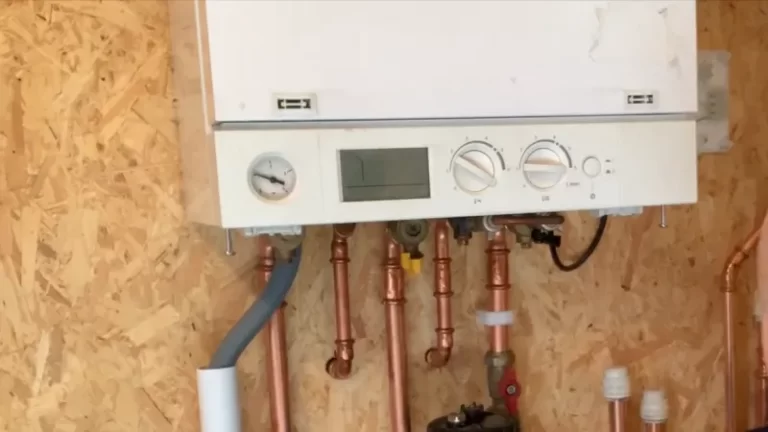Split Two Vents Off One Duct [Methods, Dengers, Alternatives]

Splitting two vents off of one duct is a common solution for providing ventilation and heating/cooling to multiple rooms. However, it is important to carefully consider the pros and cons of this approach before deciding whether it is the right solution for your home.
Proper ventilation and heating/cooling are essential for maintaining a comfortable and healthy living environment, and it is important to choose a solution that will effectively meet the needs of your home.
In this article, we will explore the benefits and drawbacks of splitting two vents off of one duct, as well as alternative solutions and factors to consider when making a decision.
You'll Learn About
Should You Split Two Vents Off One Duct?
It is generally not recommended to extend a supply duct to serve another room because doing so can significantly decrease the airflow to both rooms. This is because the air coming out of the supply duct is divided between the two rooms, resulting in less air being delivered to each room. This can lead to poor heating performance and discomfort in both rooms.
Install a Separate Supply Duct
Instead of extending the supply duct, it is usually better to install a separate supply duct for the new room. This will ensure that the new room receives an adequate amount of airflow and the original room is not affected. It is also important to properly size the ductwork to ensure that the airflow is sufficient for the size of the room and the heating/cooling needs of the space.
Separate Return Air Duct
As for the return air, it is generally recommended to have a separate return air duct for each room or group of rooms. This helps to ensure that the air is properly circulated and the heating/cooling system can operate efficiently. If a room does not have a return air vent, it is generally a good idea to install one to improve the performance of the heating/cooling system.
Properly Seal and Insulate
In addition to installing a separate supply duct and return air vent, it is also important to properly seal and insulate the ductwork to ensure that the air is delivered effectively and efficiently. This can help to reduce energy loss and improve the overall performance of the heating/cooling system. Overall, it is best to consult with a heating and cooling professional to determine the best approach for your specific situation.
Pros and Cons of Splitting Two Vents Off of One Duct
It is important to carefully weigh the pros and cons of splitting two vents off of one duct and consider whether it is the best solution for your home. In some cases, it may be more appropriate to install separate supply ducts or use a different type of ventilation and heating/cooling system.
Relatively Easy and Inexpensive
One potential advantage of splitting two vents off of one duct is that it can be a relatively easy and inexpensive solution to provide ventilation and heating/cooling to multiple rooms. Depending on the layout of your home and the location of the ducts and vents, it may be more practical and cost-effective to split an existing duct rather than installing a new one.
Decrease the Airflow
However, there are also several potential disadvantages to splitting two vents off of one duct. The most significant disadvantage is that it can decrease the airflow to both rooms, which can result in poor heating/cooling performance and discomfort.
When a duct is split, the air coming out of the duct is divided between the two rooms, which means that each room receives less air than it would if it had its own dedicated duct. This can lead to uneven temperatures and difficulty maintaining a comfortable indoor environment.
Not Energy-efficient
Additionally, splitting two vents off of one duct may not be the most energy-efficient solution. Because the airflow to each room is reduced, the heating/cooling system may have to work harder to maintain a comfortable temperature, which can increase energy consumption and costs.
How to Split Two Vents Off of One Duct?
- Tools needed:
- Measuring tape
- Sheet metal snips
- Sheet metal screws
- Sheet metal elbows
- Duct tape
- Flexible duct
- Measure and mark the location to split the duct:
- Measure the distance from the duct where you want to split it into two vents.
- Mark the location on the duct using a pencil or marker.
- Cut the duct:
- Use the sheet metal snips to cut the duct at the marked location.
- Attach the elbows:
- Take two sheet metal elbows and attach them to the two ends of the cut duct.
- Secure the elbows to the duct using sheet metal screws.
- Connect flexible ducts to the elbows:
- Attach one end of the flexible duct to each of the two elbows.
- Secure the flexible ducts to the elbows using duct tape.
- Run the flexible ducts to the vents:
- Run each flexible duct to its respective vent.
- Secure the end of the flexible duct to the vent using duct tape.
- Test the system:
- Turn on the fan and check if air is flowing through both vents.
- Make any necessary adjustments to ensure proper airflow.
Alternatives to Splitting Two Vents Off of One Duct
There are several alternatives to splitting two vents off of one duct that can provide effective ventilation and heating/cooling for multiple rooms in a home.
Install Separate Supply Ducts
One alternative is to install separate supply ducts for each room. This can provide the most consistent and efficient airflow, as each room has its own dedicated duct rather than sharing with another room.
This can improve the performance and comfort of the heating/cooling system, and may also be more energy-efficient. However, installing separate supply ducts can be more costly and may require more extensive renovations than simply splitting an existing duct.
Use a Ductless Mini Split System
Another alternative is to use a ductless mini split system. These systems consist of an outdoor unit that is connected to one or more indoor units by small refrigerant lines. They do not require ductwork and can be an effective solution for providing heating and cooling to individual rooms or small spaces or even crawl spaces.
Ductless mini splits can be more energy-efficient than traditional central heating and cooling systems, and they can be a good option for homes that do not have existing ductwork or where installing new ducts is not feasible.
Zone the Heating/cooling System
Another alternative is to zone the heating/cooling system. Zoning involves dividing the home into separate areas, each with its own thermostat and control system. This allows you to customize the temperature and airflow in each area independently and can be a more efficient and flexible way to heat and cool different areas of the home.
Zoning can be implemented with a variety of different heating and cooling systems, including central systems, ductless mini splits, and others. Using the right mini-splits is very important.
The best alternative to splitting two vents off of one duct will depend on the specific needs and circumstances of your home. It is important to carefully consider the pros and cons of each option and consult with a heating and cooling professional to determine the best solution for your situation.
Factors to Consider When Deciding Whether to Split Two Vents Off of One Duct
There are several factors to consider when deciding whether to split two vents off of one duct in your home. These factors can help you determine the most appropriate solution for your specific needs and circumstances.
Size of the Rooms
One important factor to consider is the size of the rooms and their heating/cooling needs. Larger rooms typically require more airflow and may not be adequately served by splitting a duct with a smaller room. It is important to ensure that each room receives an appropriate amount of airflow based on its size and heating/cooling needs.
Location of the Ducts and Vents
Another factor to consider is the location of the ducts and vents. If the ducts and vents are already in place, it may be more practical to split an existing duct rather than installing a new one. However, if the ducts and vents are not conveniently located or if it is necessary to make significant changes to the ductwork, it may be more appropriate to install separate supply ducts or use a different type of ventilation and heating/cooling system.
Cost and Complexity
The cost and complexity of installation is also an important factor to consider. Splitting two vents off of one duct may be a more cost-effective and less complex solution than installing separate supply ducts or using a different type of system. However, it is important to consider the long-term performance and energy efficiency of the system, as well as any potential maintenance or repair costs.
It is important to carefully consider all of these factors when deciding whether to split two vents off of one duct in your home. It may be helpful to consult with a heating and cooling professional to determine the best solution for your specific needs and circumstances.
Tips for Installing and Maintaining a Split Duct System
If you decide to split two vents off of one duct in your home, there are several tips that can help you ensure that the system is installed and maintained properly.
Properly Size the Ducts and Vents
One important tip is to properly size the ducts and vents. It is important to ensure that the ducts and vents are large enough to handle the airflow needed to effectively heat and cool the rooms. If the ducts and vents are too small, the system may not be able to deliver enough air, leading to poor performance and discomfort.
On the other hand, if the ducts and vents are too large, the system may waste energy and may not function as efficiently as it could.
Seal and Insulate
Another tip is to properly seal and insulate the ductwork. Ducts that are not properly sealed or insulated can leak significant amounts of air, which can reduce the efficiency and effectiveness of the heating/cooling system. Properly sealing and insulating the ductwork can help to reduce energy loss and improve the overall performance of the system.
Maintain Proper Airflow
It is important to maintain proper airflow and balance the system. This may involve adjusting the dampers or other components of the system to ensure that the air is properly distributed to each room. It may also be necessary to clean and maintain the system regularly to ensure that it is operating at its best.
Overall, it is important to follow these tips and seek professional guidance when installing and maintaining a split duct system to ensure that it performs effectively and efficiently.
Conclusion
In conclusion, splitting two vents off of one duct can be a practical solution for providing ventilation and heating/cooling to multiple rooms in a home. However, it is important to carefully consider the pros and cons of this approach and weigh it against other options to determine the best solution for your specific needs and circumstances.
Splitting a duct can be an easier and more cost-effective solution in some cases, but it can also decrease the airflow to both rooms and may not be the most energy-efficient option. It is important to consider the size of the rooms and their heating/cooling needs, the location of the ducts and vents, the cost and complexity of installation, and the energy efficiency and long-term performance of the system when deciding whether to split two vents off of one duct.
Seeking professional guidance can also be helpful in making an informed decision and ensuring that the system is installed and maintained properly.

